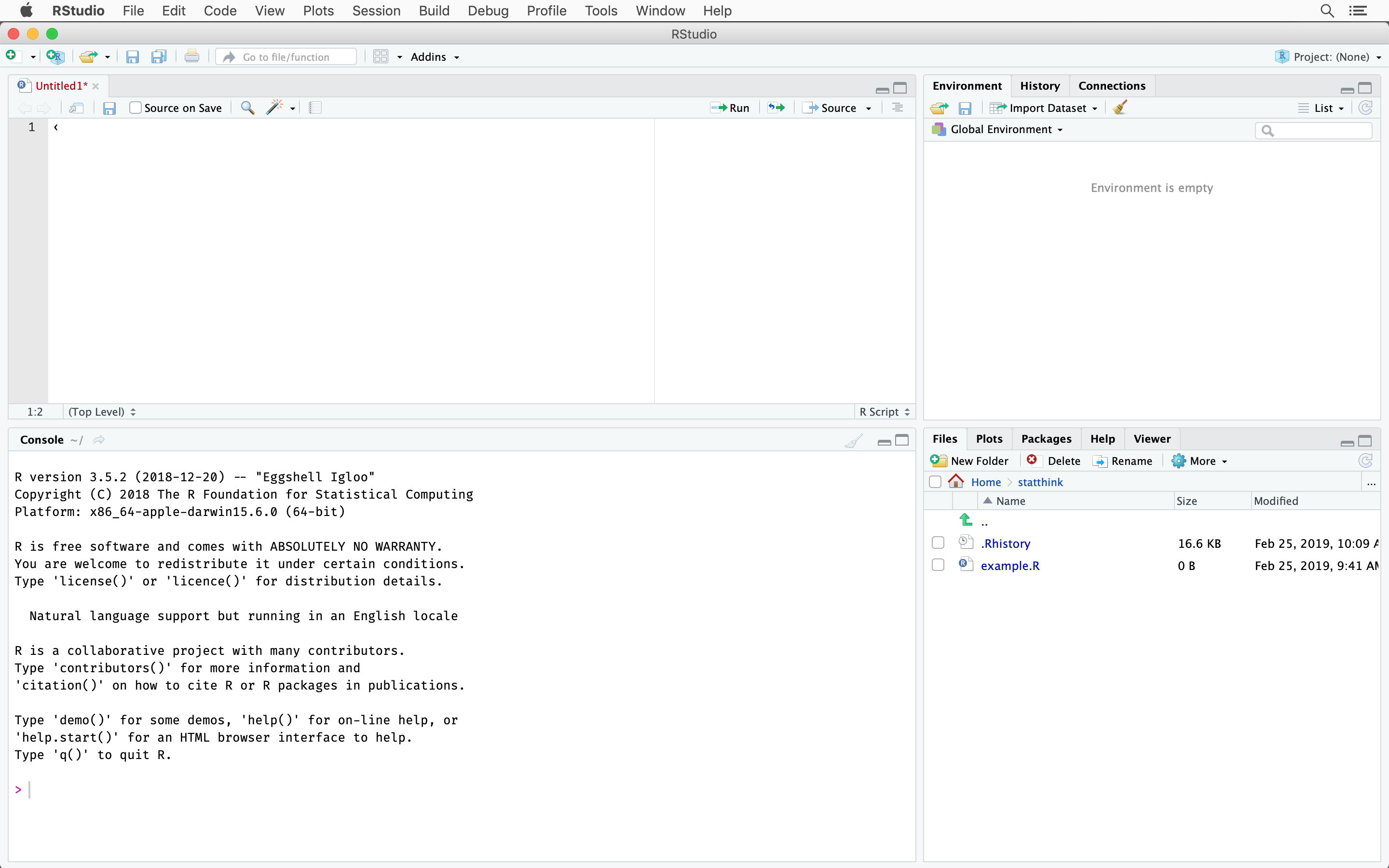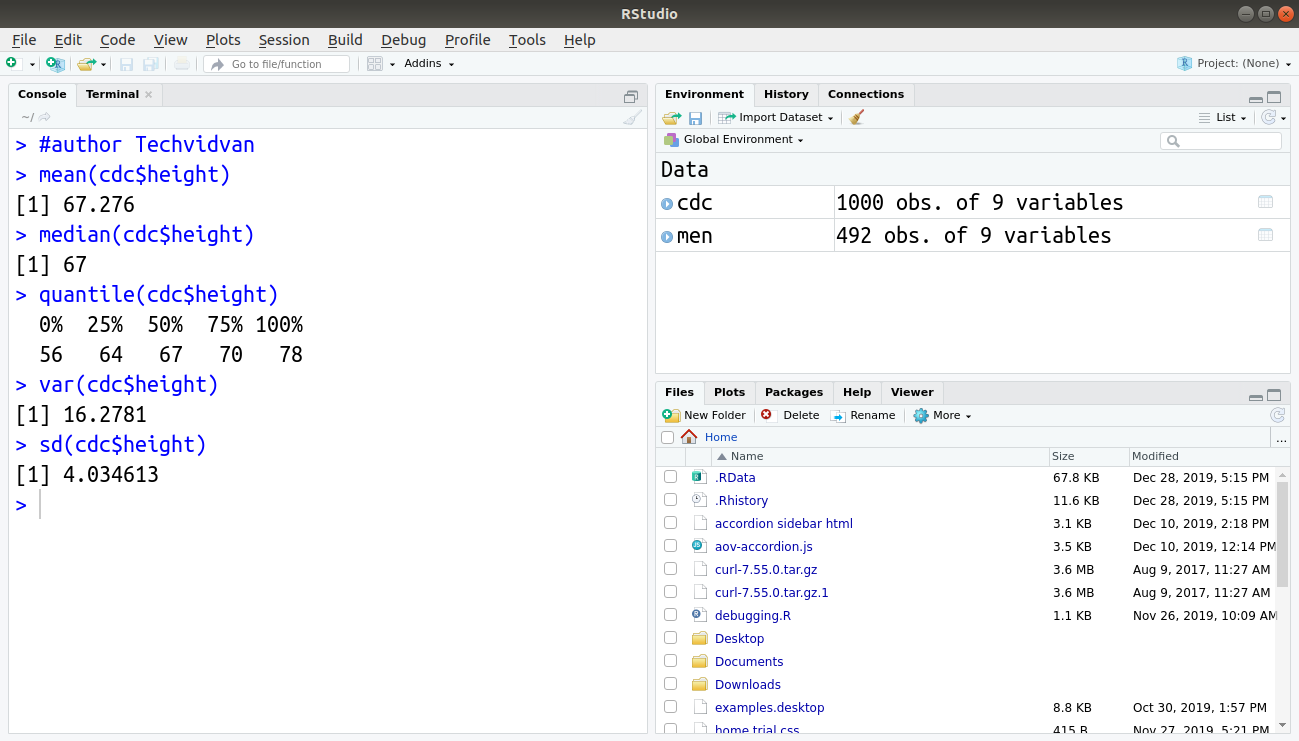
- #Standard deviation rstudio how to#
- #Standard deviation rstudio code#
- #Standard deviation rstudio professional#
- #Standard deviation rstudio series#
# generates a broader set of output, one row per variable. # a second sample, applying describe () to the ChickWeight data above Vars n mean sd median trimmed mad min max range skew kurtosis se # we're going to use the test vector provided in the first standard deviation example above Here’s an example of describe () in action, applied to the data set from above. For a nicer version of descriptive statistics, which includes more advanced analysis of the center, mean, and spread of variable, we recommend checking out the describe () function within the R psych library. While there’s always the summary() function in Base R, that doesn’t include the standard deviation as part of it’s output.
#Standard deviation rstudio professional#
Describe () in the psych package – a nicer view of descriptive statisticsĪnalysts using R in a research or professional context are often asked to run descriptive statistics on a data set provided to them, running multiple studies on each field within the data frame. None of the columns need to be removed before computation proceeds, as each column’s standard deviation is calculated. These techniques can be used to calculate sample standard deviation in r, standard deviation of rows in r, and much more.
#Standard deviation rstudio how to#
Learning how to calculate standard deviation in r is quite simple, but an invaluable skill for any programmer. # how to calculate standard deviation in r data frame # standard deviation in R - using sapply to map across columns # using head to show the first handful of records # standard deviation in R - dataset example This will help us calculate the standard deviation of columns in R.

For this example, we’re going to use the ChickWeight dataset in Base R. Need to get the standard deviation for an entire data set? Use the sapply () function to map it across the relevant items. How to Find the Standard Deviation for the Fields in an R Data Frame # set up standard deviation in R exampleĪs you can see, calculating standard deviation in R is as simple as that- the basic R function computes the standard deviation for you easily. By default, this will generate the sample standard deviation, so be sure to make the appropriate adjustment (multiply by sqrt((n-1)/n)) if you are going to use it to generate the population standard deviation. This standard deviation function is a part of standard R, and needs no extra packages to be calculated. You can calculate standard deviation in R using the sd() function.
#Standard deviation rstudio code#
Added code to download a csv file from the web or computer and run descriptive statistics on the data fields.
#Standard deviation rstudio series#

TL DR For Finding the Standard Deviation in R This function is robust enough to be used to calculate the standard deviation of an array in R, the standard deviation of a vector in R, and the standard deviation of a data frame variable in R. If you are doing an R programming project that requires this statistic, you can easily generate it using the sd () function in Base R. It is commonly included in a table of summary statistics as part of exploratory analysis. The standard deviation of a sample is one of the most commonly cited descriptive statistics, explaining the degree of spread around a sample’s central tendency (the mean or median).


 0 kommentar(er)
0 kommentar(er)
